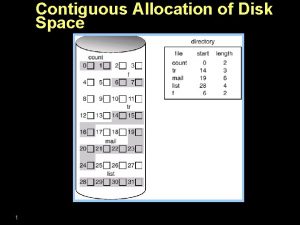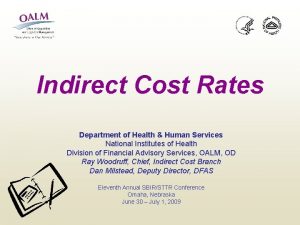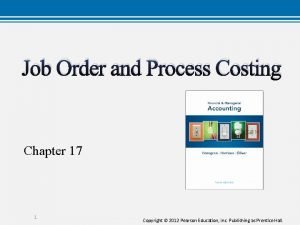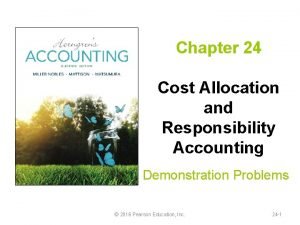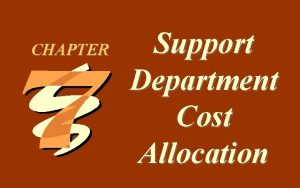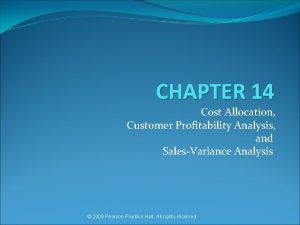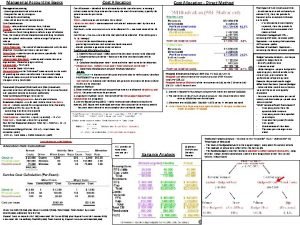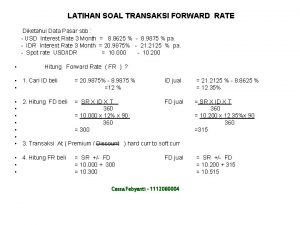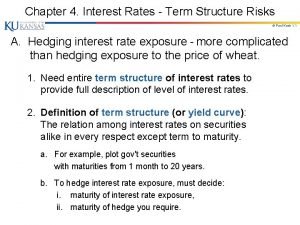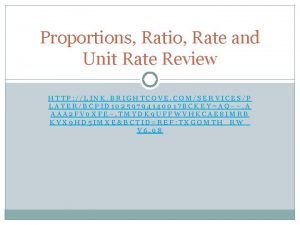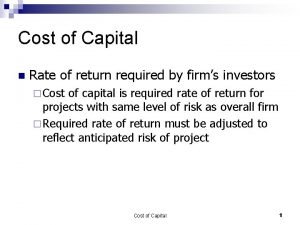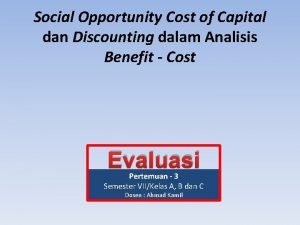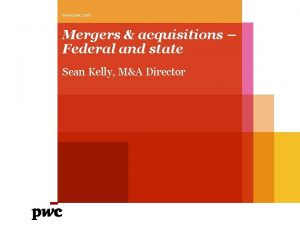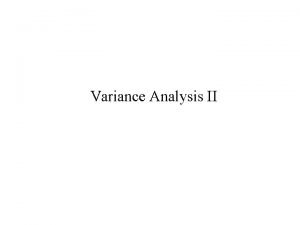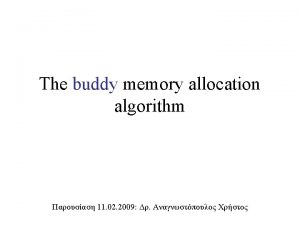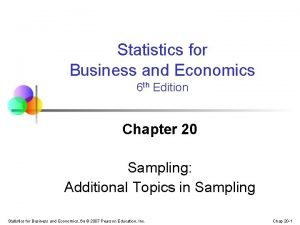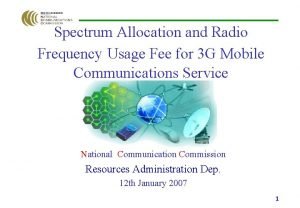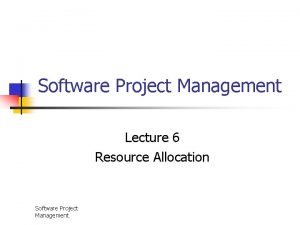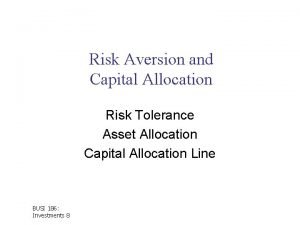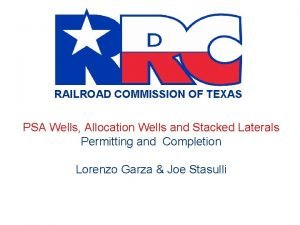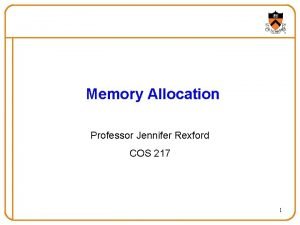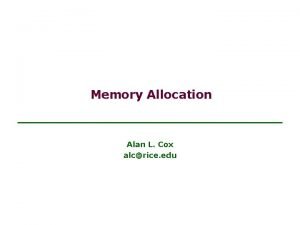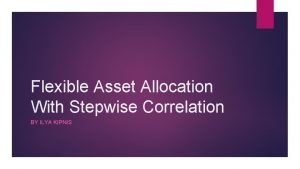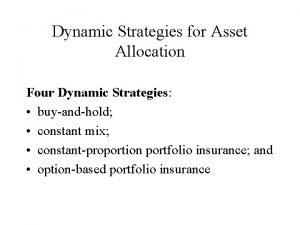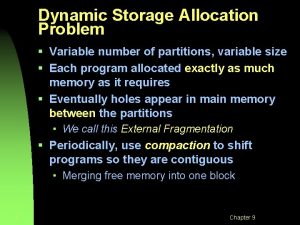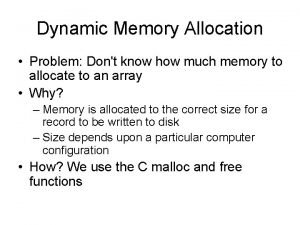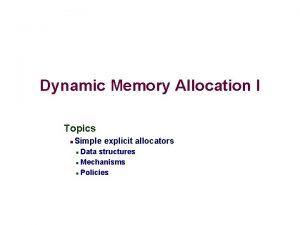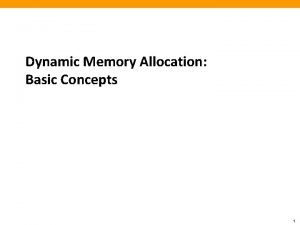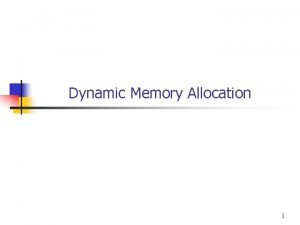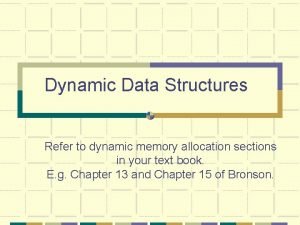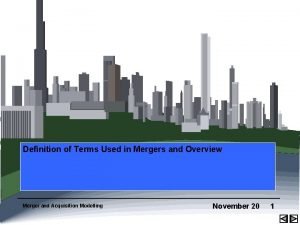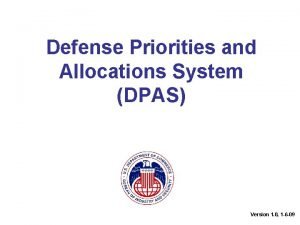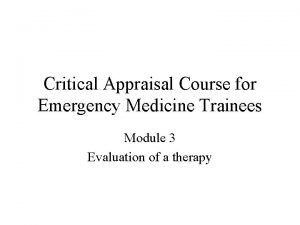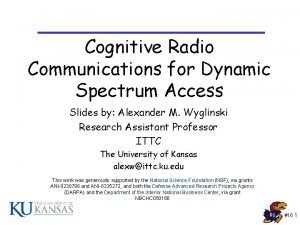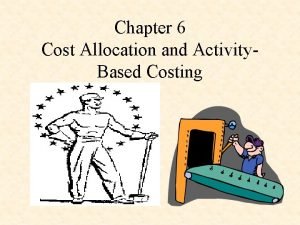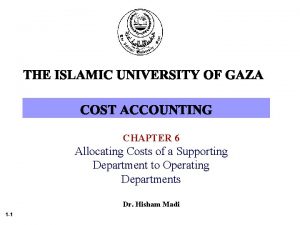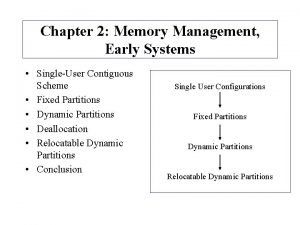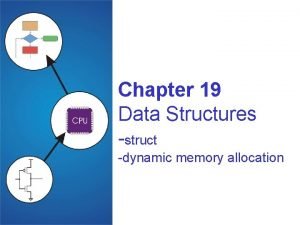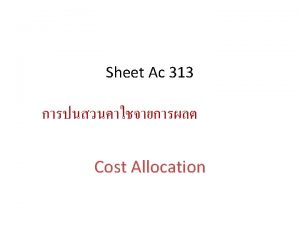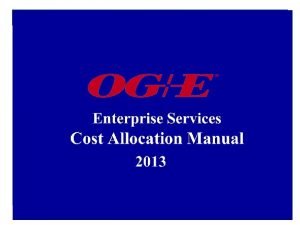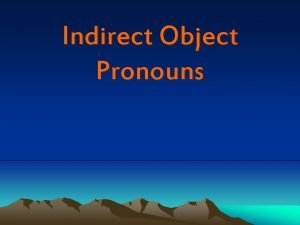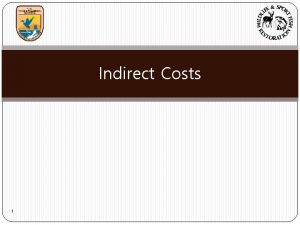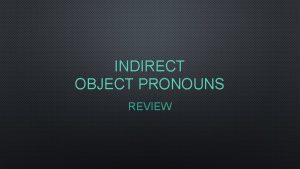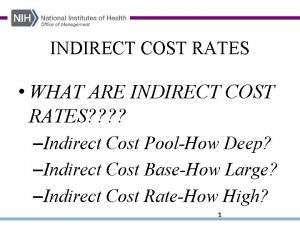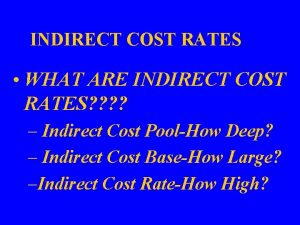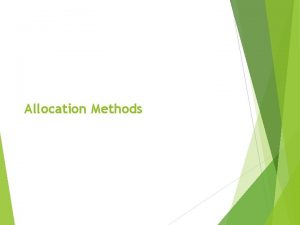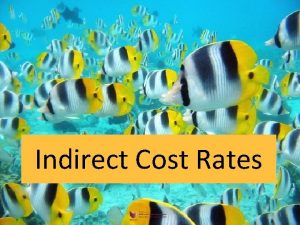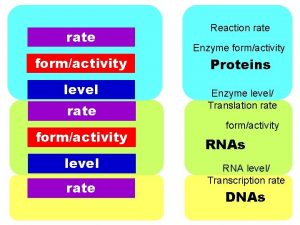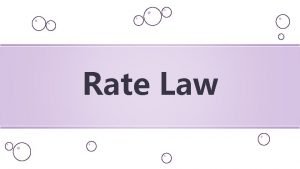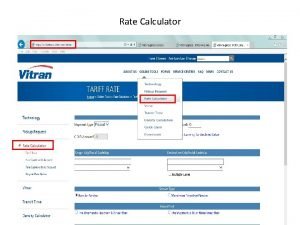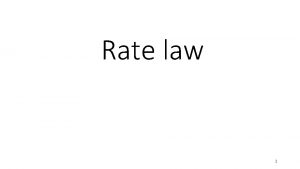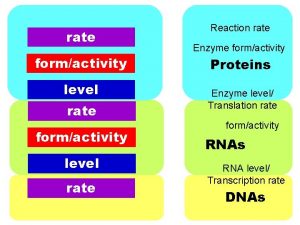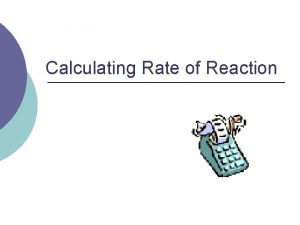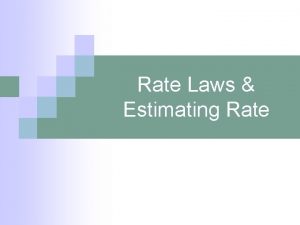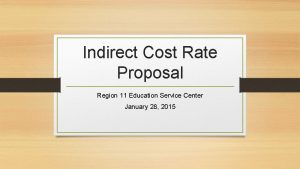COST ALLOCATION PLANS INDIRECT COST RATE OVERVIEW Cost






























































- Slides: 62

COST ALLOCATION PLANS & INDIRECT COST RATE

OVERVIEW • • • Cost Allocation Plans (CAPs) Indirect, Direct Cost and Administrative Cost Type of Rate and Direct Base Indirect Cost Rate Calculations Cognizant Agency and Submission Requirements Common IDC Findings

WHAT ARE COST ALLOCATION PLANS AND INDIRECT COSTS RATES?

Cost Allocation Plans • Cost allocation plan is the documentation identifying, accumulating, and allocating or developing billing rates based on the allowable costs of services provided by a governmental unit on a centralized basis to its department and agencies. (2 CFR Part 200. 9) enefiting activities.

State-Wide Cost Allocation Plans (SWCAP) • Mechanism for the state to identify, summarize, and allocate statewide indirect costs • Allows state to charge cost of central services to federal awards • Should submit annual SWCAP to U. S. Department of Health and Human Services

Direct & Indirect Cost Definition Direct Costs – costs that can be identified specifically with a particular final cost objective, such as Federal award, or other internally or externally funded activity, or that can be directly assigned to such activities relatively easily with a high degree of accuracy. (2 CFR 200. 413 a). Indirect Costs – cost incurred for a common or joint purpose benefitting more than one cost objective, and not readily assignable to the cost objectives specifically benefitted, without effort disproportionate to the results achieved. (2 CFR 200. 56).

Administrative Cost Definition Administrative Costs – costs of general services (such as salaries, fringe benefits, accounting, office supplies, contracting, etc. ) Administrative costs can be direct or indirect.

Difference between Indirect and Direct Costs Indirect “Administrative” Salary, Related Occupancy Expenses, Supplies & Communication Cost Policy Statement Direct “Program” Salaries, Space Costs for Program Activities, Travel and Equipment

INDIRECT COSTS RATE AND BASE

Types of Indirect Cost (IDC) Rates • • Final Rate Fixed Carry-Forward Provisional De Minimis

Types of Indirect Cost (IDC) Rates (cont) • De Minimis Rate – indirect cost rate of 10% of Modified Total Direct Cost (MTDC) for entities without negotiated for a rate. • Never received a Federally-negotiated indirect cost rate for any federal awards. • Less than $35 million in direct federal funding for the fiscal year requested.

Types of Indirect Cost Base Modified Total Direct Costs Salaries and Wages

Base Used By DOJ/OJP • Total Direct Salaries and fringe benefits (Total Direct Labor) • Total Direct Salaries excluding fringe benefits • Modified Total Direct Cost (MTDC) all salaries and wages, fringe benefits, materials and supplies, services, travel and subawards (subgrants and subcontracts) and capital expenditures up to the first $25, 000 of each.

INDIRECT COSTS RATE CALCULATIONS

Basic Formula • Total Costs = Direct Costs + Indirect Costs • Total Chargeable Costs = Direct Costs + Direct Cost Base x Indirect Cost Rate • Indirect Costs Rate % = All Indirect Cost / All Direct Cost x 100

Indirect Costs Rate Calculation An indirect cost rate is simply a device for determining fairly and conveniently, within the boundaries of sound administrative principles, what proportion of indirect cost each program should bear. An indirect cost rate is the ratio, expressed as a percentage, of an indirect cost pool and some direct cost base. “Pool / Base = Rate” Indirect Cost Rate Indirect Costs $ 75, 000 Direct Costs Ø Salaries & Wages $ 150, 000 Ø Other Direct Costs $ 100, 000 Total Direct Costs Indirect Costs: $75, 000 Salaries & Wages: $150, 000 Indirect Costs: $75, 000 Total Direct Costs: $250, 000 $ 250, 000 50% Total Direct Labor (TDL) = 30% Total Direct Cost (TDC) =

Fixed Carried-Forward Rate per negotiation (FY) 2009: 16. 96% b)Actual Direct Expenditure 4, 341, 731, 758 Actual Indirect Expenditure 710, 630, 728 SWCAP 289, 615, 842 Total Pool -01, 000, 246, 570 c) Carry-Forward calculations Recovered Rate x Actual Direct Costs 16. 96% x $4, 341, 731, 758 2011: 29. 12% a) Direct cost base 4, 341, 731, 758 Indirect Cost Pool: Department Indirect Costs Carry-Forward Rate per negotiation (FY) 736, 357, 706 Should have recovered (Actual indirect costs for FY 09) 1, 000, 246, 570 Under (+) / Over (-) Recovery 263, 888, 864 Department Indirect costs 710, 630, 728 SWCAP 289, 615, 842 Carry forward 263, 888, 864 Total Pool 1, 264, 135, 434

HOW TO USE INDIRECT COSTS RATE

OJP Approved Budget • • Total amount of federal award ($200, 000 / 1. 0 + 0. 10) Approved indirect cost rate $181, 818 10% • Total Chargeable Indirect Costs ($200, 000 / (1. 0 + 0. 10)) $18, 182 • Total amount of Federal award $200, 000

For Actual Expenditures • Actual direct costs $185, 440 • Approved indirect cost rate • Actual indirect costs incurred ($185, 440 x 10%) $18, 544 • Total chargeable indirect costs $18, 182 10%

How to charge your federal project… • • Calculate the actual indirect costs based on actual expenditures (at least quarterly) The agency will make a journal entry to charge the indirect cost amount to each federal project as an expenditure

COGNIZANT AGENCY AND SUBMISSION REQUIRMENTS

WHAT IS A COGNIZANT AGENCY? • • • The federal agency responsible for reviewing, negotiating, and approving cost allocation plans or indirect cost rate proposals developed under 2 CFR Part 200. 19. The cognizant agency negotiates on behalf of federal agencies and for non-profits, for-profits, and educational organizations. To obtain an indirect cost rate, a grantee must submit an indirect cost proposal to its cognizant agency and negotiate an indirect cost agreement.

Cognizant Agency Cognizant agency is the agency that provides the largest amount of direct funds to a grantee over a certain period of time. Department of Justice Department of Health & Human Service Department of Interior • Office of Justice Program (OJP) • Office of Violence Against Women (OVW) • Health & Human Service (HHS) • All American Indian Tribes

What are the Submission Requirements For Cost Allocation and Indirect Costs Rate Plans? • Cost Allocation Plans and Indirect Cost Rates must be: ü Developed and submitted within six months after the close of the entity’s fiscal year; ü Submitted as required by the cognizant agency; ü Inclusive of all units desiring to claim indirect costs; and ü Maintained on file if submission is not required.

Submitted Documentation should include: • • Indirect Cost Certification Organization chart Cost Policy Statement Audited Financial Reports (original sent to Federal Audit Clearinghouse) • Personnel Cost Worksheet (Non & For-Profit) or Signed Statewide Cost Allocation Plan (local Government) • Statement of Employee Benefit (Non & For Profit) or Fixed plus Carry Forward Calculation (local Government)

Supporting Documentation (cont) • Indirect Cost Rate Proposal(s) reconciled with the financial reports or budget • A list of grants showing source, amounts, and relevant dates • Itemized calculation supported by financial statement in cost pool and direct cost bases • Supporting documents for all adjustments • All Miscellaneous & Other expenses items in indirect cost MUST be itemized

Grantee Responsibilities • Grantees are responsible for ensuring that indirect costs are: ü Allowable, Reasonable, and Necessary; ü Treated consistently; ü In compliance with Generally Accepted Accounting Principles; ü Allocable to the federal program; ü Proportional to benefit received; and ü Adequately documented.

Examples of Generally Unallowable Indirect Costs Include: • • Contributions Entertainment costs Fund raising Lobbying Professional service costs Public information service costs Bad Debts Legal Costs

COMMON INDIRECT COST FINDINGS

Common Indirect Cost Related Findings • • Not having a current, approved Cost Allocation Plans or Indirect Cost Rates. Using expired indirect cost rate. Inconsistency in charging costs as direct or indirect between federal awards. Costs that do not benefit the award are inappropriately allocated via the Indirect Cost Rate.

What are some of the Concerns OJP have about Grantee Submissions of Indirect Cost Rate Proposals? • Incomplete documentation. • Indirect costs proposals do not provide sufficient detail to explain the functions and the benefits associated with the costs being allocated. • Indirect cost proposal that is not reconcilable to a budget or a financial statement and contains no explanation of the difference.

QUESTIONS AND ANSWERS

• CAN THE AUDIT COSTS UNDER 2 CFR PART 200 SUBPART F BE RECOVERED?

Yes, Subpart F allows audit costs to be recovered as either direct or indirect costs in accordance with applicable cost principles. However, there is no special appropriation for audit costs. To recover audit costs, the organization must build them into the specific grant/contract documents (if direct) or into the overhead proposal (if indirect).

• HOW MANY DAYS DO WE HAVE TO SUBMIT A FINAL INDIRECT COST RATE PROPOSAL (BASED ON INCURRED COSTS)?

All organizations must submit their final indirect cost rate proposals within 180 days (6 months) of the end of your organization’s fiscal year.

• What should a grantee do when an award does not provide for indirect cost reimbursement or provides for indirect costs at a rate lower than on the negotiation agreement?

The decision to accept an award that does not pay indirect costs or pays indirect cost using a rate lower than what has been negotiated is a grantee decision.

RESOURCES • Indirect Cost Submission Guidancehttps: //ojp. gov/funding/Apply/Resources/Indi rect. Costs. pdf • Indirect Cost Proposal Submissionshttps: //ojp. gov/funding/Apply/Resources/Indi rect. Costs. pdf • DOJ Financial Guidehttp: //ojp. gov/financialguide/DOJ/pdfs/2 015_DOJ_Financial. Guide. pdf


Knowledge Assessment 1. Which one of the following is NOT the purpose of financial monitoring review? A. Ensure grantee’s accounting systems and record keeping are in compliance with Federal regulations B. Safeguard against fraud, waste, and abuse C. Penalize grantees for failing to follow federal guidelines D. Provide technical assistance E. Make recommendations for improvement

Knowledge Assessment 2. What are the two types of financial monitoring reviews? A. Desk reviews and On-site reviews B. On-site reviews and Off-site reviews C. Audit plan and Desk review D. Audit plan and monitoring reviews

Knowledge Assessment 3. If weakness were noted in your organization’s internal controls during a desk or on-site financial monitoring review, your organization will be required to develop a corrective action plan. q True q False

Knowledge Assessment 4. All of the following, except one, are considered questioned cost. A. Unauthorized costs B. Unsupported costs C. Unreasonable costs D. Allowable costs

Knowledge Assessment 5. How many days, from the end of its fiscal year, does a grant recipient have to submit a current indirect cost rate proposal? A. 360 days B. 2 months C. 180 days D. None of the above

Knowledge Assessment 6. Time and attendance/activity reports are to be based on actual hours worked on the federal award. q True q False

Knowledge Assessment 7. Fringe Benefits include all of the following, except? A. Federal Insurance Contributions (FICA) B. Health Insurance C. Retirement D. Membership at fitness club E. Workers’ compensation

Knowledge Assessment 8. All contribution costs used to satisfy a matching or cost-sharing requirement must be documented by the recipient at the same level of detail as Federal funds. q True q False

Knowledge Assessment 9. When conducting financial monitoring risk assessment, the final score is the result of? A. Risk score multiplied by risk weight B. Risk score multiplied by importance score C. Importance score multiplied relative value D. Importance score multiplied by risk weight

Knowledge Assessment 10. Grant recipients should time their advanced drawdown requests to ensure that Federal cash on hand is the minimum needed for disbursement to be made immediately or within 10 days. q True q False

Knowledge Assessment 11. Which one of the following is NOT an indirect cost rate type? A. Final B. Variable C. Provisional D. Fixed/Carry-Forward

Knowledge Assessment 12. All grant recipients are required to establish and maintain accounting systems and financial records that accurately account for grant funds. q True q False

Knowledge Assessment 13. Property records for a non-expendable equipment should contain: A. Description of the item B. Serial number C. Cost (source of funding) D. Acquisition date E. Location of item F. All of the above

Knowledge Assessment 14. Segregation of duties is an internal control mechanism intended to safeguard assets and prevent fraud, waste, and abuse. q True q False

Knowledge Assessment 15. Subrecipients are to be monitored by the passthrough entity for compliance with federal requirements. q True q False

Knowledge Assessment 16. Once the cognizant agency approves an indirect cost rate proposal, it cannot be audited. q True q False

Knowledge Assessment 17. What is the term used to describe a deliberate reduction of state and local funds because of the existence of Federal funds? A. Reallocation B. Supplanting C. Supplemental D. Recoupment

Knowledge Assessment 18. Adequacy of written policies and procedures is one of the areas of focus during an on-site review. q True q False

Knowledge Assessment 19. An adequate accounting system: A. Meets requirements for periodic reporting B. Provides financial data for planning, control, measurement, and evaluation of direct and indirect costs purposes C. Presents and classifies costs, as required for budgetary and evaluation purposes D. All of the above

Knowledge Assessment 20. Indirect cost rate provides a basis for: A. Charging the Legislature B. Billing the federal government for those costs that indirectly benefit the federal project C. Recouping all non-federal entity costs regardless of impact on the federal grant program D. Indirectly charging the federal for property costs

Start Time 8: 00 AM Leave your stuff
 Contiguous allocation vs linked allocation
Contiguous allocation vs linked allocation Nih sbir indirect cost rate
Nih sbir indirect cost rate 10% de minimis indirect cost rate uniform guidance
10% de minimis indirect cost rate uniform guidance Ocga ucla
Ocga ucla How to calculate predetermined overhead allocation rate
How to calculate predetermined overhead allocation rate Predetermined overhead allocation rate
Predetermined overhead allocation rate Cloud cost allocation
Cloud cost allocation Supporting department adalah
Supporting department adalah Cost allocation and profitability analysis
Cost allocation and profitability analysis Cost allocation direct method
Cost allocation direct method Cap rate interest rate relationship
Cap rate interest rate relationship What is real interest rate and nominal interest rate
What is real interest rate and nominal interest rate Relative growth rate equation
Relative growth rate equation Transaksi forward
Transaksi forward Addison currency exchange
Addison currency exchange Forward rate notation
Forward rate notation 1 year forward rate formula
1 year forward rate formula Difference between rate and unit rate
Difference between rate and unit rate Difference between direct and indirect cost
Difference between direct and indirect cost Indirect costs
Indirect costs Indirect questions introductory phrases
Indirect questions introductory phrases Indirect cost of expatriate failure
Indirect cost of expatriate failure Requi
Requi Social opportunity cost adalah
Social opportunity cost adalah Purchase price allocation pwc
Purchase price allocation pwc Variable overhead efficiency variance
Variable overhead efficiency variance Turn constructional units
Turn constructional units Buddy memory allocation
Buddy memory allocation Capital allocation line
Capital allocation line Variance of population proportion
Variance of population proportion Spectrum allocation
Spectrum allocation Allocation management software
Allocation management software Dominant capital allocation line
Dominant capital allocation line Resources allocation and mobilization plan (ramp)
Resources allocation and mobilization plan (ramp) Paul montgomery cork
Paul montgomery cork Production sharing agreement texas
Production sharing agreement texas Virtual memory in os
Virtual memory in os Heap allocation
Heap allocation Cox
Cox Meaning of industrial estates
Meaning of industrial estates Dynamic memory c++
Dynamic memory c++ Econophysics
Econophysics What is industrial estates
What is industrial estates Flexible asset allocation
Flexible asset allocation Specialist skills sociology
Specialist skills sociology Dynamic strategies for asset allocation
Dynamic strategies for asset allocation Dynamic storage allocation problem
Dynamic storage allocation problem Example of dynamic memory allocation
Example of dynamic memory allocation Knuth's boundary tags
Knuth's boundary tags Advantages and disadvantages of dynamic memory allocation
Advantages and disadvantages of dynamic memory allocation Knuth’s boundary tags
Knuth’s boundary tags Example of dynamic memory allocation
Example of dynamic memory allocation Dynamic memory allocation in data structure
Dynamic memory allocation in data structure Examples of departmental accounting
Examples of departmental accounting Purchase price allocation
Purchase price allocation Defense priority allocation system
Defense priority allocation system Allocation concealment
Allocation concealment Spectrum allocation
Spectrum allocation Resource loading vs resource leveling
Resource loading vs resource leveling First stage allocation
First stage allocation Incremental revenue allocation method
Incremental revenue allocation method Single user contiguous memory allocation
Single user contiguous memory allocation Dynamic memory allocation in data structure
Dynamic memory allocation in data structure
